ASRock Rack 1U2E-C252 Intel Xeon E-2300 1U Server in Test Review
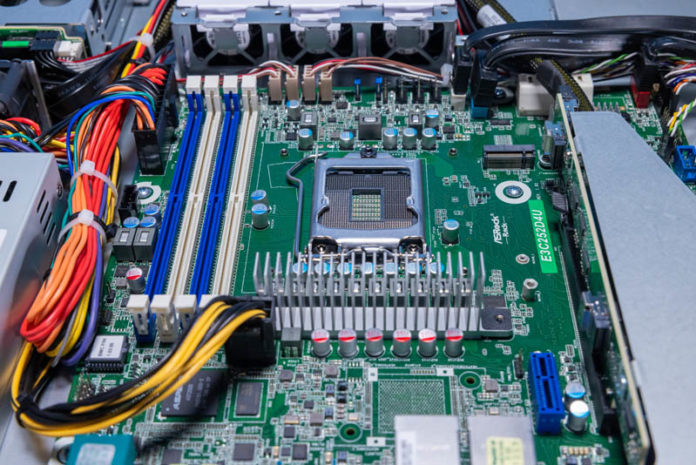
ASRock Rack 1U2E-C252 is a relatively compact 1U server for the Intel Xeon E-2300 series. Although the Xeon E-2300 series has been around for a while (here is the ASRock Rack Intel Xeon E-2300 Series launch piece), the series is still the current generation platform for the lower-cost 1P server market. In this review we will see what makes the ASRock Rack 1U2E-C252 different.
ASRock Rack 1U2E-C252 hardware overview
As has been the norm in recent tests, we will split our hardware overview section into external and internal hardware overviews. This allows us to delve deeper into what makes this platform unique, as ASRock Rack is known for bringing a unique touch to its servers.
ASRock Rack 1U2E-C252 External Hardware Overview
The system itself is a 1U server, although not very deep. Officially, it's 393.2mm or 15.5 inches deep. This keeps the unit very compact and also makes it wider than deep for some degree of scale.
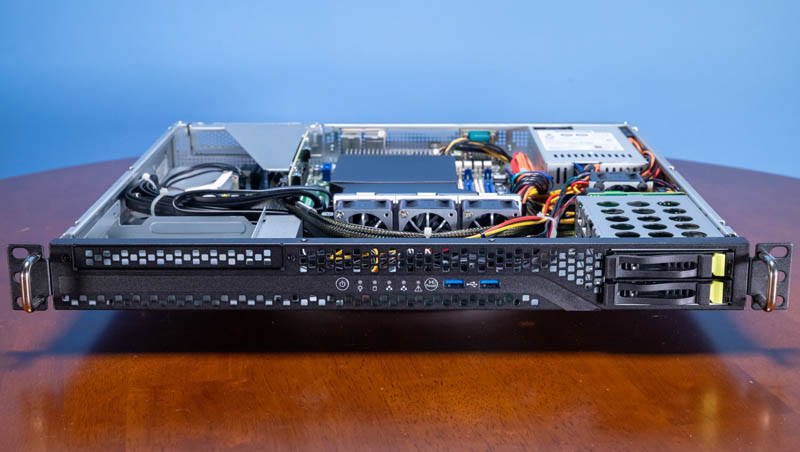
There is an optical bay on the left that is unused in our system.
Two USB 3.0 ports are located on the front of the device along with status LEDs and the power/reset buttons.
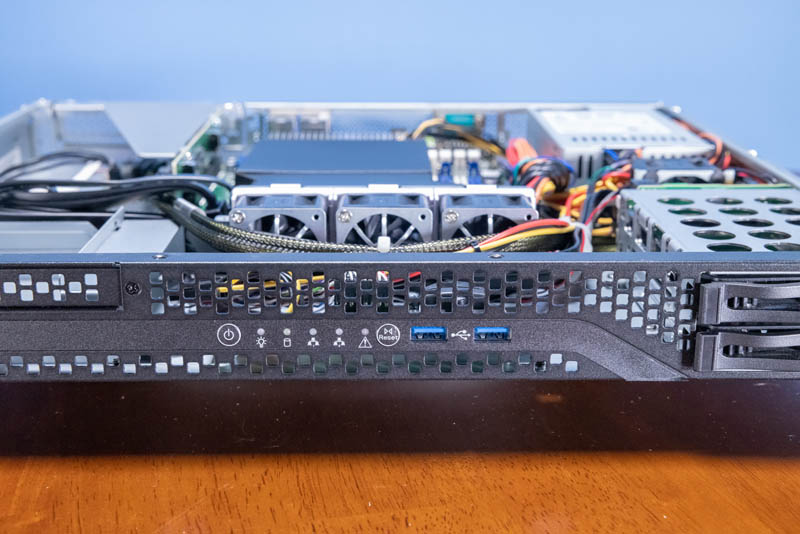
There are two 2.5″ bays on the right front. These can support NVMe or SATA drives and have a big impact on the rest of the server. In the market this server is designed for, common storage configurations are a single SSD, mirrored SSDs, or a boot drive and 1-2 storage drives. While some users may want other configurations, this is actually designed for specific markets.
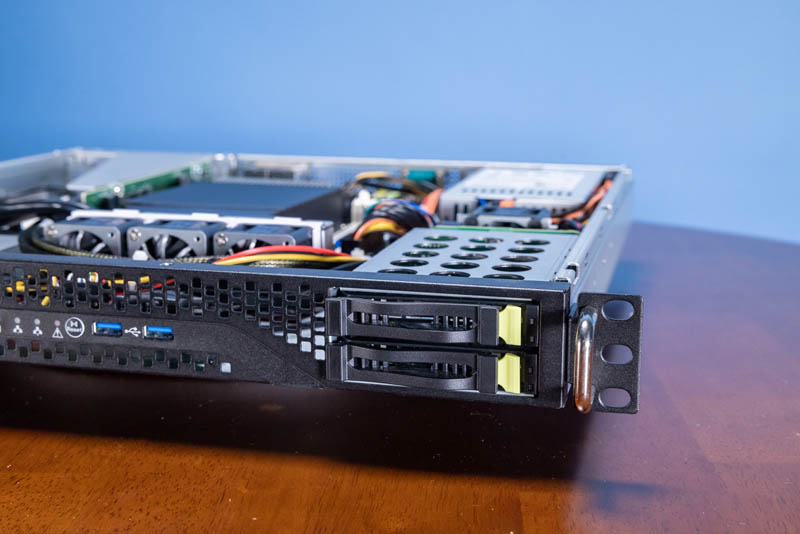
We're going to show a little bit of the inside of the server just to keep the external and internal hardware overview more balanced. So if we look behind the 2.5" bays, we can see that they have both SATA and PCIe connectivity over a small hot-swap backplane. Another nod to the 2.5-inch bays designed for NVMe is that there is a fan for the drives. If those drive bays were just SATA, most servers would typically just use the power supply fan to cool drives. On more powerful NVMe devices, this extra cooling is a small design feature that helps a lot.
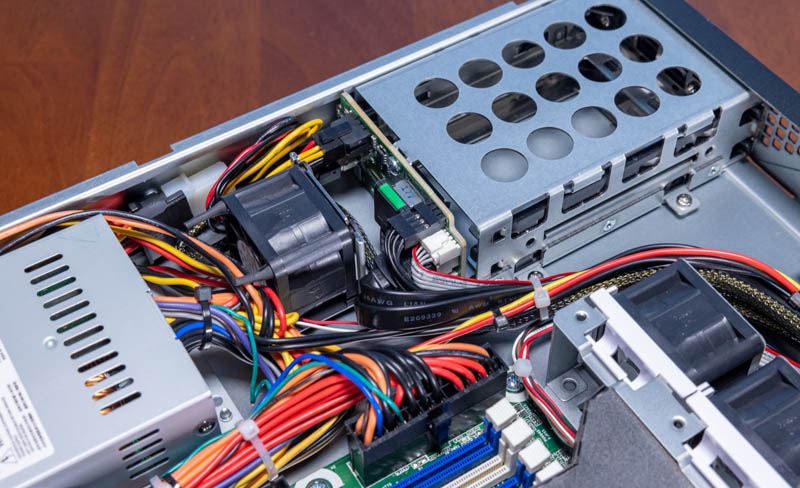
Moving to the back of the system, we see the PSU on the left, then the rear I/O in the middle, and the PCIe riser on the right. There's actually a bit more going on here, so let's get to that.
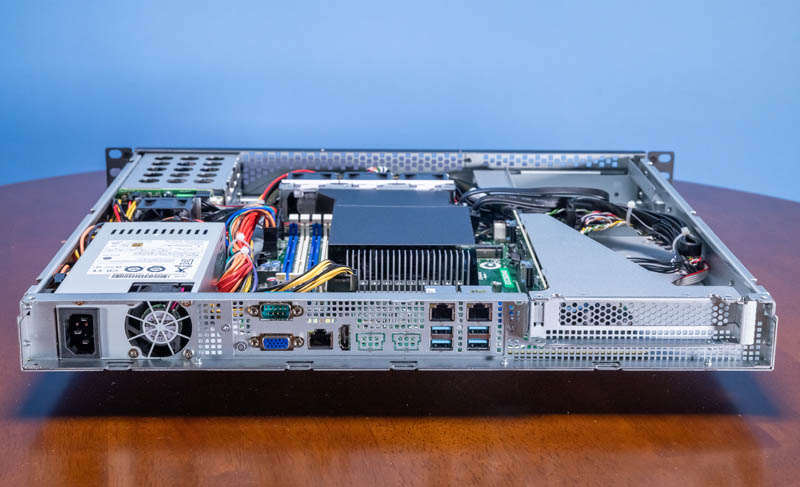
The power supply in this system is a non-redundant unit. That means it's fixed and also not hot-swappable. If you wanted to feed A+B stream into this server, you would need something like an ATS.
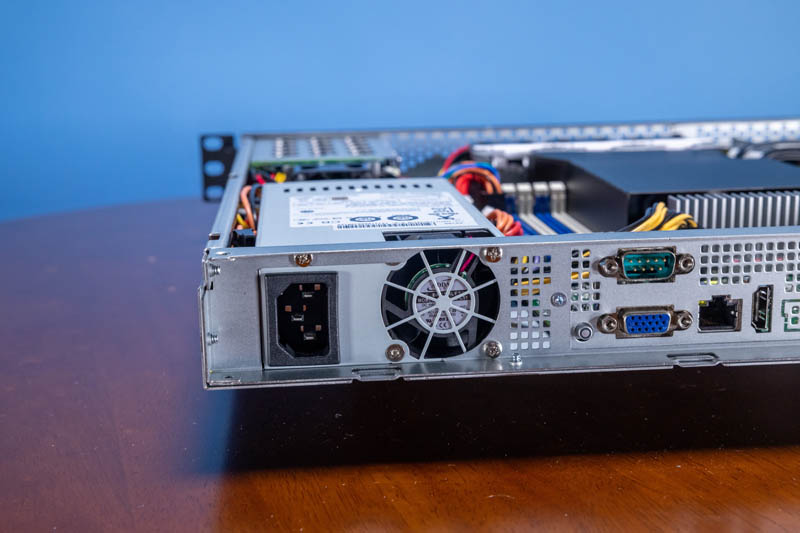
The device itself is rated at 315W 80Plus Gold. These servers are typically rated to run well below 200W, so this power supply will suffice.
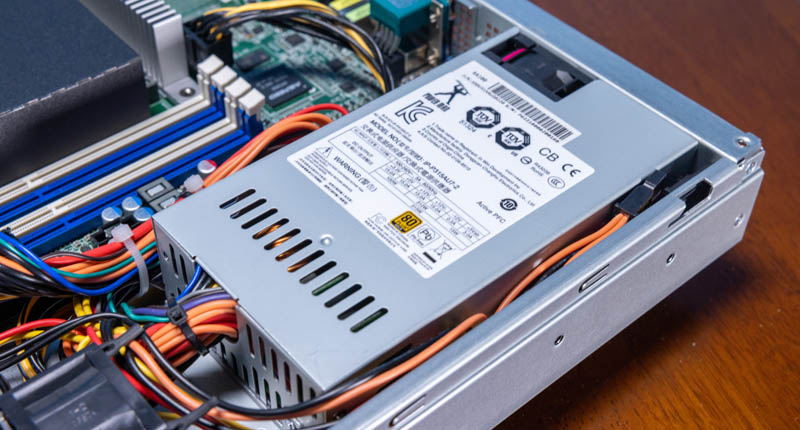
Standard VGA and serial ports are located on the rear of the server. There are four USB 3.2 Gen1 Type-A ports, which is more plentiful than many servers we see. There is also an out-of-band management port for IPMI and two Intel i210-AT 1GbE ports. There are two other port cutouts that are not used in our system as we will see on the motherboard, there is room in the motherboard design for 10GbE options but this server is not set up for that.
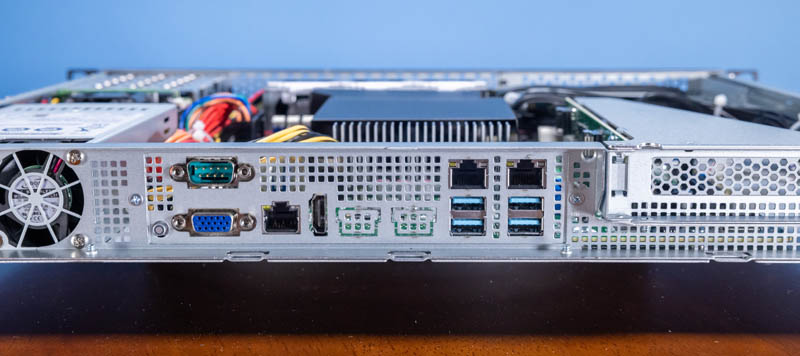
There is also an HDMI port. This is very unusual in servers, but as mentioned earlier, ASRock Rack takes a unique twist on its servers.
There's room for a full-height expansion slot, but in practice things look different once we're inside.
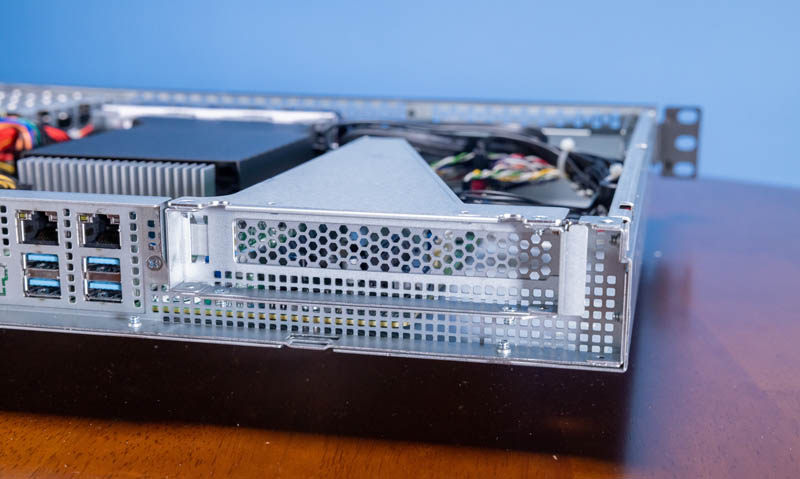
This brings us to the internal hardware overview.